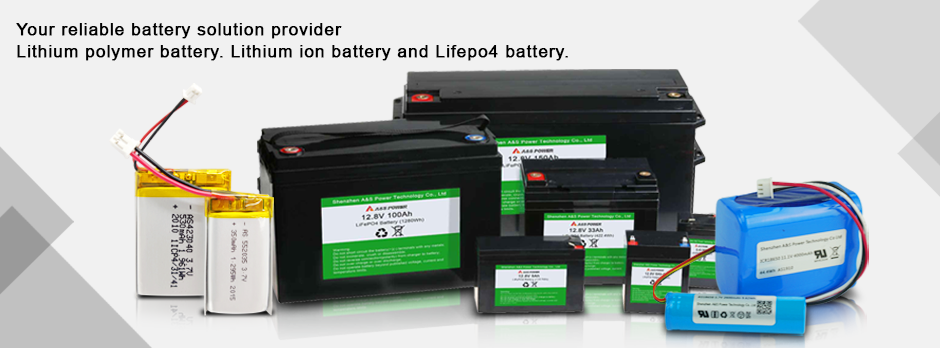Common fault analysis of Lithium ion battery BMS
2021-07-02
1. The whole system does not work after power supply
Possible causes: abnormal power supply, short circuit or open wiring, no voltage output from DCDC.
Troubleshooting: Check whether the external power supply of the management system is normal, whether it can meet the minimum operating voltage required by the management system, and whether the external power supply is set with limited current, resulting in insufficient power supply of the management system;The external power supply can be adjusted according to the power supply requirements of the management system.Check whether the wiring harness of the management system is short or damaged, modify the wiring harness to make it work normally;If the external power supply and wiring harness are normal, check whether the DCDC in the whole system power supply management system has voltage output;You can replace a broken DCDC module in any unusual case.
2.BMS cannot communicate with ECU
Possible cause: THE BMU(main control module) is not working and the signal line may be broken
Troubleshooting: Check whether the BMU power supply is normal at 12V/24V;Check whether CAN signal transmission line is inserted or unplugged;Listen for CAN port data to see if BMS or ECU packets CAN be received.
3. Communication between BMS and ECU is unstable
Possible reasons: the external CAN bus does not match well and the bus branch is too long
Troubleshooting: Check whether the bus matching resistance is correct;Whether the match position is correct and the branch is too long
4. The internal communication of BMS is unstable
Possible causes: loose plugs for communication lines, irregular CAN connections, and repeated BSU addresses.
Troubleshooting: Check whether the wiring is loose;Test whether the bus matching resistance is correct, whether the matching position is correct, and whether the branch is too long;Check for duplicate BSU addresses.
5. Insulation detection and alarm
Possible cause: battery or drive leak.Insulation module connection failure.
Troubleshooting: Use THE BDU display module to check the insulation test data, check the battery bus voltage, negative bus voltage to the ground is normal;The insulation resistance of the bus and the driver to the ground is measured with an insulation meter.
6. The main relay does not close after the power is switched on
Possible causes: load detector not connected, prefilled relay open, prefilled resistance open.
Troubleshooting: Use the BDU display module to check the bus voltage data, check the battery bus voltage, load bus voltage is normal;Check whether the load bus voltage increases during pre-charging.
7. The data of the acquisition module is 0
Possible cause: the acquisition line of the acquisition module is disconnected, and the acquisition module is damaged.
Troubleshooting: Unplug the module again to measure whether the battery voltage at the connection of the acquisition line is normal and whether the resistance value at the connection of the temperature sensor line is normal.
8. Wrong battery current data
Possible causes: The hall signal wire plug is loose, the Hall sensor is damaged, the acquisition module is damaged.
Troubleshooting: Replug the current Hall sensor signal line;Check whether the hall sensor power is normal and whether the signal output is normal;Replace acquisition module
9.The battery temperature difference is too high
Possible causes: loose plug of cooling fan and failure of cooling fan.
Trouble shooting: unplug the fan plug wire again;Electrify the fan respectively and check whether the fan works normally.
10. Battery temperature too high or too low
Possible causes: loose plug of cooling fan, failure of cooling fan, damage of temperature probe.
Trouble shooting: unplug the fan plug wire again;Electrify the fan respectively, check whether the fan is normal;Check whether the actual temperature of the battery is too high or too low;Measure internal resistance of temperature probe.
11. System error report after relay operation
Possible causes: relay contact disconnection, relay contact adhesion
Troubleshooting: Re-unplug wire harness;Use a multimeter to measure the on and off state of the auxiliary contacts.
12. Do not charge with a charger
The possible reason is that the communication between the charger and BMS is not normal
Troubleshooting: Replace the charger or BMS, and confirm whether it is THE FAULT of BMS or the charger;Check that the matching resistance of the BMS charging port is normal.
13. No BMS data is shown on the onboard instruments
Possible cause: Abnormal wiring harness connection of master control module
Troubleshooting: Check whether the wiring harness of the main control module is fully connected, whether the low-voltage working voltage of the vehicle is normal, and whether the module is working normally.
If you have any questions, please contact us:sales@szaspower.com
We are a professional lithium battery production supplier, support OEM&ODM customized services, and provide you with a perfect Lithium ion battery, Lithium polymer battery, LiFePo4 battery solution.












